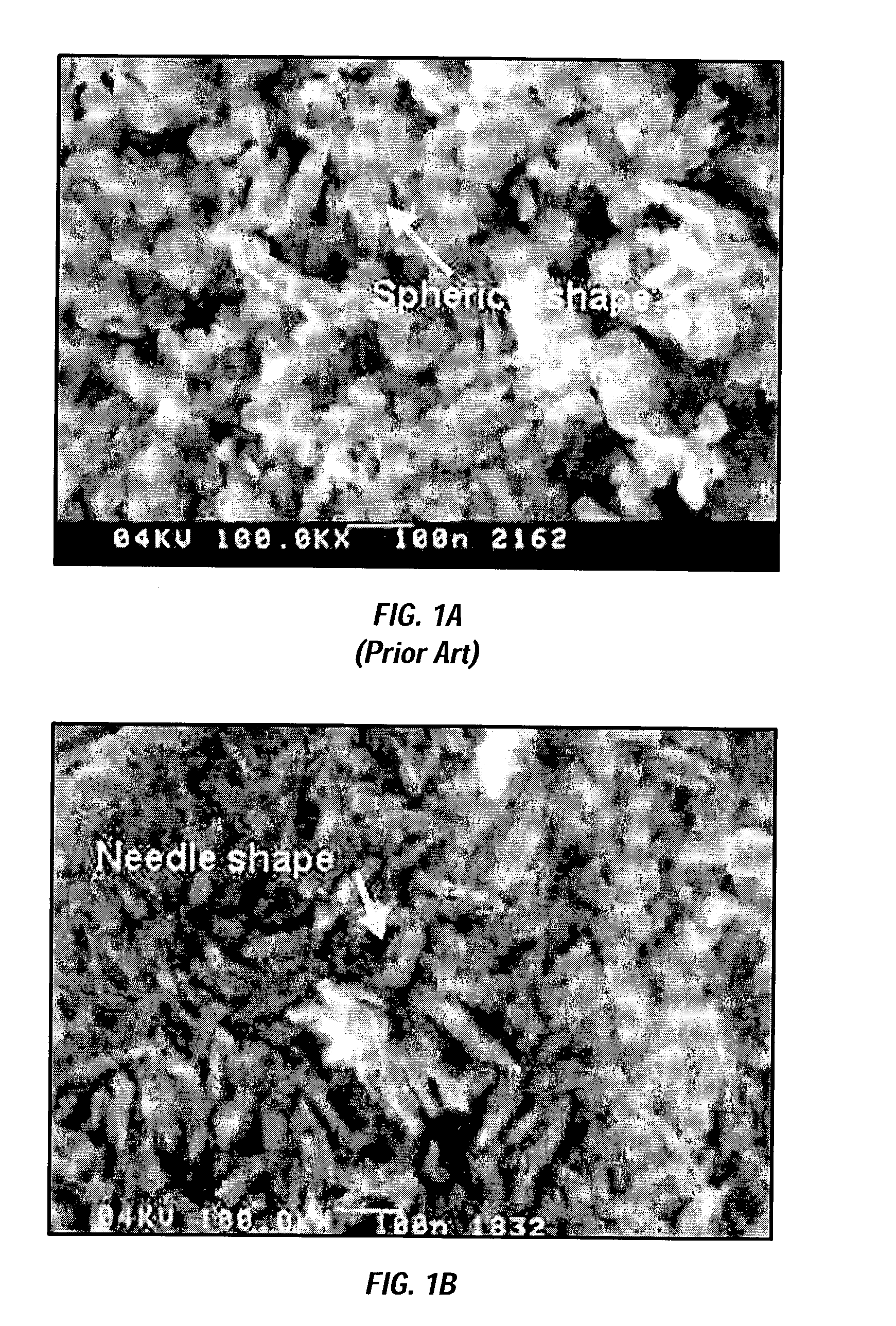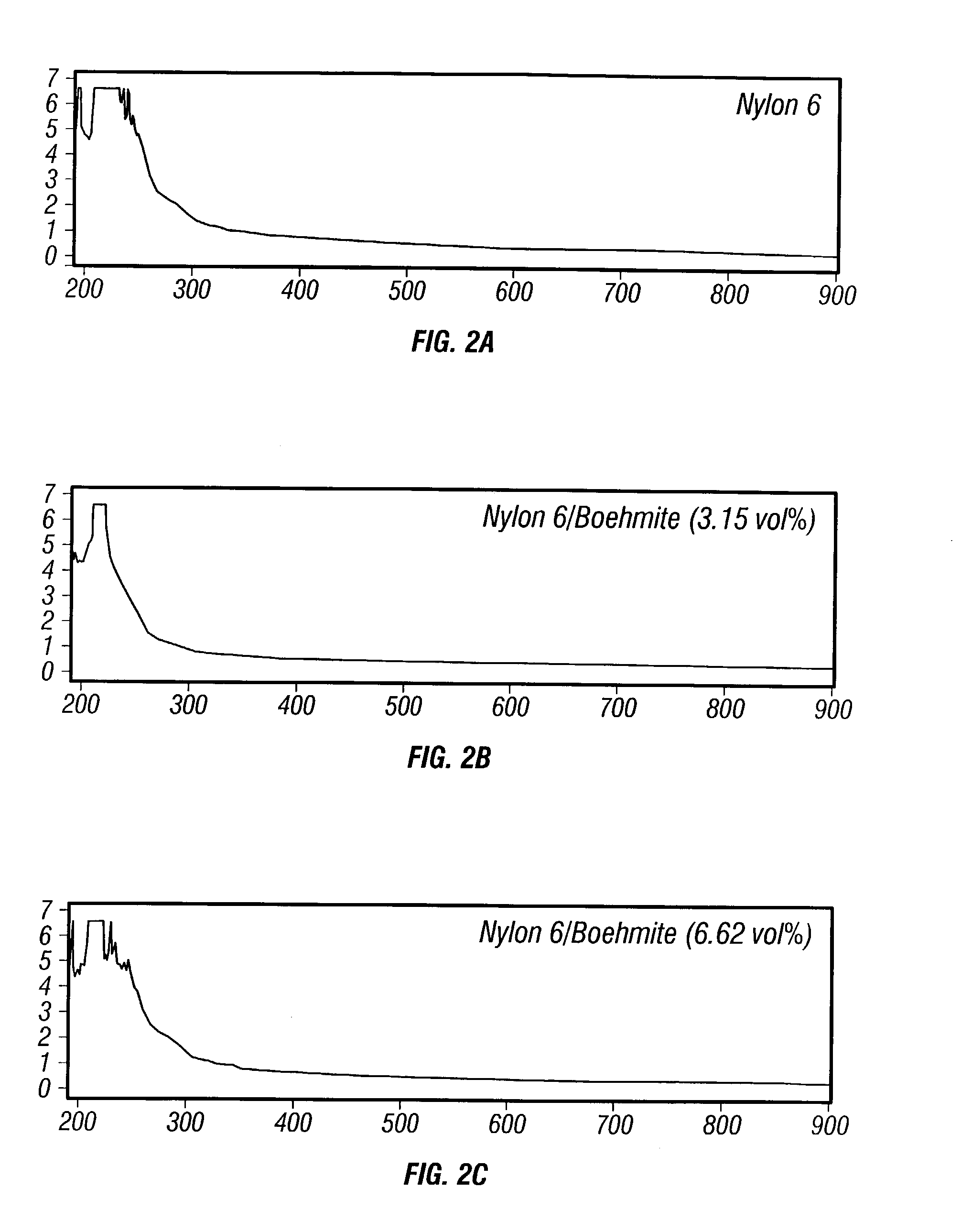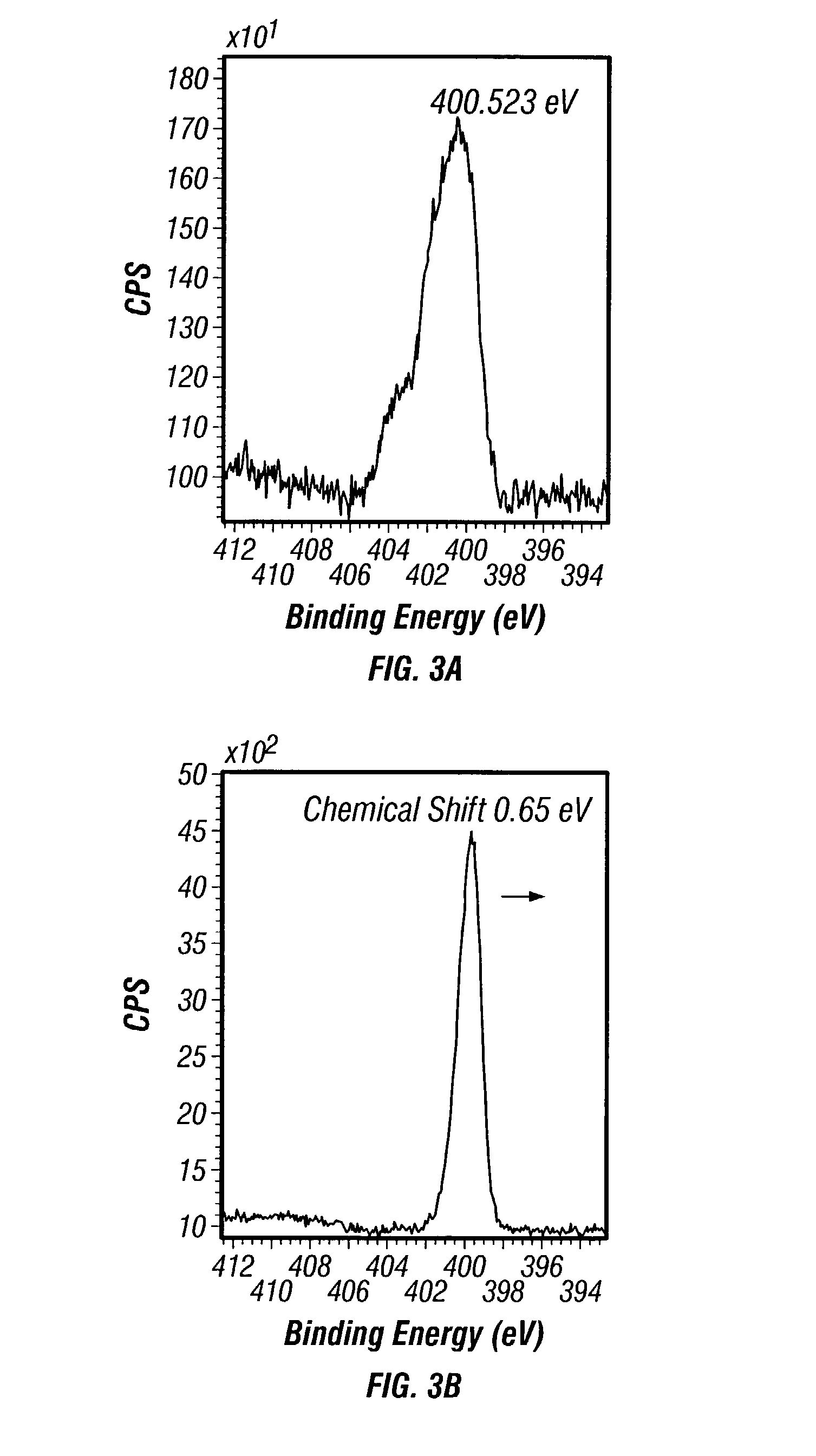Boehmite particles and polymer materials incorporating same
a technology of boehmite and polymer materials, applied in the field of boehmite particles, can solve the problems of fine boehmite particles causing other problems, flaky or equiaxed particles of boehmite which did not readily disperse, and were not easily separated
- Summary
- Abstract
- Description
- Claims
- Application Information
AI Technical Summary
Problems solved by technology
Method used
Image
Examples
example 1
[0032]An autoclave was charged with 250 g of CV3002 gibbsite purchased from Alcoa; 25 g of boehmite obtained from SASOL under the name—Catapal B pseudoboehmite; 1000 g of deionized water; and 56 g of 18% nitric acid. The boehmite was pre-dispersed in 100 g of the water and 7 g of the acid before adding to the gibbsite and the remaining water and acid.
[0033]The autoclave was heated to 180° C. over a 45 minute period and maintained at that temperature for 2 hours with stirring at 530 rpm. An autogenously generated pressure of about 150 psi was reached and maintained. Thereafter the boehmite dispersion was removed from the autoclave and the liquid content was removed at a temperature of 95° C. The resultant mass was crushed to less than 100 mesh.
[0034]The boehmite obtained was in needle-shaped particles as shown in FIG. 1B. This is shown together with FIG. 1A which illustrates the prior art boehmite as represented by C-200 boehmite from SASOL. It will be noted that C-200, in common wit...
example 2
[0035]This example illustrates the technique used to blend the boehmite of the invention with nylon 6 and the properties of the products obtained at two different levels of incorporation of boehmite in comparison with the unmodified polymer.
[0036]Granulated Nylon 6 was dried overnight night at 80° C. and then mixed with the specified amount of filler. The mixture was then passed through a Werner & Pfleiderer ZSK-30 twin-screw vented extruder. The extruder barrel was maintained at 235–245° C. and the screw speed was maintained at 300 rpm. The extruded material was cooled and pelletized and dried at 80° C.
[0037]Test samples were then injection molded from the pelletized material using an extrusion barrel temperature of 250–270° C. and a mold maintained at 70–90° C.
[0038]Three samples were made in this way: one with no filler; one with 3.15 vol % of the needle-shaped boehmite of the invention; and one with 6.62 vol % of the same boehmite. FIGS. 2, 3 and 4 show the UV-VIS Spectra, the F...
example 3
[0041]In this Example the effect of incorporating a conventional boehmite, exemplified by C-200 available from SASOL, which has particles as shown in FIG. 1(A) with a similar amount of the boehmite according to the invention, which has particles as shown in FIG. 1(B). In each case the samples evaluated were compounded as described in Example 2. The modulus of elasticity, flexural modulus, E′ (storage modulus from DMA measurements) at 30° C. and 135° C., tensile strength, and heat distortion temperature were measured for the unmodified nylon 6, and the same polymer with conventional boehmite and then with the boehmite according to the invention were measured. The results are presented in the bar graphs shown in FIG. 6. From these graphs it can be clearly seen that the needle-shaped boehmite outperforms the conventional boehmite and often by considerable amounts.
PUM
| Property | Measurement | Unit |
|---|---|---|
| Fraction | aaaaa | aaaaa |
| Fraction | aaaaa | aaaaa |
| Nanoscale particle size | aaaaa | aaaaa |
Abstract
Description
Claims
Application Information
 Login to View More
Login to View More - R&D
- Intellectual Property
- Life Sciences
- Materials
- Tech Scout
- Unparalleled Data Quality
- Higher Quality Content
- 60% Fewer Hallucinations
Browse by: Latest US Patents, China's latest patents, Technical Efficacy Thesaurus, Application Domain, Technology Topic, Popular Technical Reports.
© 2025 PatSnap. All rights reserved.Legal|Privacy policy|Modern Slavery Act Transparency Statement|Sitemap|About US| Contact US: help@patsnap.com



